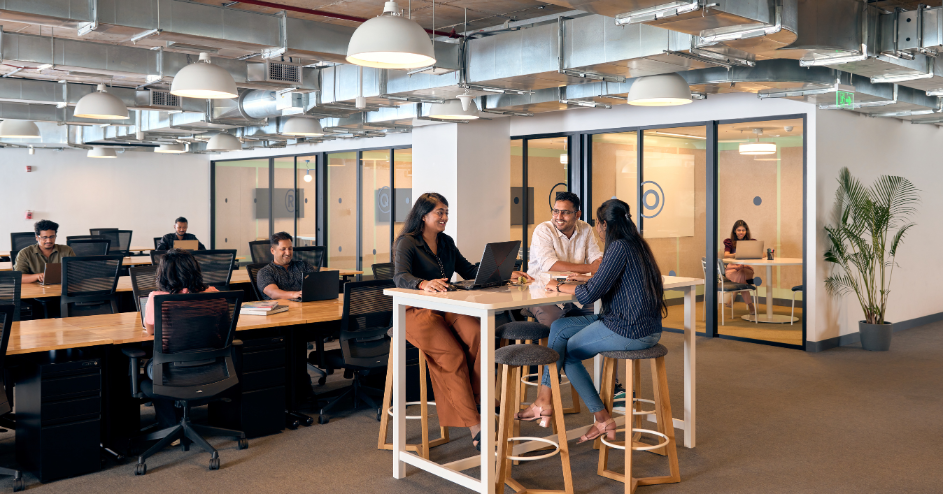WEWORK LABS
India's Live Events Boom: Drivers, Challenges, and Opportunities

Learn the boom in India's live events industry, driven by rising demand and technological advancements. Read about the economic impacts, challenges, and future trends.
Introduction
Of late, there’s been an explosive amount of large-scale events happening in India with marquee events like Coldplay’s World Tour, Maroon 5’s concert and Lollapalooza taking place this year. It’s also been a busy year for the space, with one of the biggest acquisitions taking place—Paytm selling its entity Insider to Zomato for approximately ₹2,048 crore.
Two players—BookMyShow and Zomato’s District—have emerged as the largest players in the segment, dominating much of how events are ideated, scaled, ticketed, and sold to the masses.
Key Drivers of the Live Events Boom
Ten years ago, live events were primarily attended by Gen X and older Millennials, whose spending priorities often leaned more towards material possessions or savings rather than experiences. Back then, the events space was significantly smaller, with fewer large-scale productions and a less experience-driven audience. In contrast, today’s Gen Z and Millennials have reshaped the market, emphasizing experiential value and driving unprecedented growth in the events industry.
Types of Live Events Gaining Popularity
This, coupled with a “revenge” attitude towards experiences post the pandemic, has led to an insatiable demand for high level experiences with attendees shelling out upwards of ₹9,000 for a ticket to one of these concerts. The appetite is best personified by the insatiable rush for tickets to Coldplay’s concert in India which set a record for most number of people trying to purchase tickets, with about 13 million users logging in at once.
With such an insatiable appetite for live shows, how is technology from these startups keeping pace with the influx of users?
Economic impact of live events
The live events industry in India is a significant driver of economic growth, contributing billions to the economy through concerts, cultural festivals, weddings, sports events, corporate conferences, and exhibitions. It supports millions of jobs across sectors like hospitality, tourism, transportation, and media, with cities like Mumbai, Delhi, and Bangalore emerging as major event hubs. The industry also boosts local economies by increasing demand for hotels, restaurants, and retail businesses while attracting domestic and international visitors. With India's rising disposable income and a growing preference for experiential entertainment, the sector is poised for rapid expansion. However, it remains vulnerable to economic fluctuations, regulatory challenges, and unforeseen disruptions like the COVID-19 pandemic, necessitating greater resilience and digital adaptation for sustained growth.
Technological Innovation in Live Events
Events have long been an industry in India facing long standing issues. Everything from queue management to efficient ticket management and crowd management has been a problem to solve at scale, particularly as the events space continues to grow.
Startups in the country have also had to keep apace with the demand in order to stay relevant to the audience that they are catering to. To explain this further, we will be looking at technological innovations from the lens of the two biggest players—BookMyShow and District. For instance, BookMyShow introduced a randomised queue mechanism for the first time in its history, after its first round of selling Coldplay tickets. The platform also migrated to AWS, which improved scalability and cost efficiency. This transformation allowed them to handle peak traffic effectively, managing over 200 million ticket transactions annually.
Also Read: DPIIT Role in Startups
They also pioneered a very user centric design to enable better visualization of the venue for their users. From the company’s official engineering blog: “Breaking down the entire setup flow into four simple steps we tried to minimize the perception of how hard the task is. This breakdown also provided extra real estate which we then utilised to display more info for big events which was previously done using dropdowns.”
BookMyShow’s rival, District on the other hand, innovated their “Book now, sell anytime” feature right into the app to counteract rampant scalping and illegal cross-selling.
While the two apps made rampant advancements, there are still some obstacles remaining to cross.
Challenges in the Live Events Industry
When Diljit Dosanjh—the most celebrated Punjabi artist globally—declares that he will not be performing in India until the live show scene is fixed, you’re left with no option but to stand up and listen. Infrastructure inadequacies pose a considerable hurdle; many venues struggle to accommodate large crowds, resulting in long wait times, insufficient parking, and inadequate facilities, which can detract from the overall attendee experience. Safety concerns are increasingly paramount as event attendance rises; ensuring crowd safety is critical to prevent incidents that could jeopardize future events and the industry's reputation. Then there is the concern of expanding the number of live venues in the country to accommodate this demand. India lacks world-class venues, particularly in Tier 2 and Tier 3 cities, which limits the ability to host large-scale events. Many existing venues face additional challenges, such as scalping and black ticket activities, which inflate ticket prices and limit access for genuine fans. Combined with inadequate facilities, these issues further reduce accessibility and inclusivity at live events.
Conclusion
The burgeoning live events industry in India presents a paradox: while demand for concerts, festivals, and performances is on the rise, the infrastructure to support this growth is lagging significantly. Despite a youthful population eager for experiences and an expanding middle class with increasing disposable income, several formidable obstacles stand in the way of building new live event venues. Startups in the space can intervene to solve a few problems along the way, but the way forward will include proactive collaborations from multiple stakeholders—from event-goers to the government—to make the solutions more holistic. With the live events space largely dominated by two players, these players also have a greater play to make to deliver an optimal experience to attendees.
(Image credit: Pexels)
FAQs
How is technology enhancing live events in India?
Technology is improving live events in India through AI-driven analytics, virtual and hybrid formats, contactless ticketing, RFID-based entry, event management apps, and digital marketing for better engagement and efficiency.
What types of live events are becoming more popular in India?
Music festivals, international concerts, IPL and Pro Kabaddi, large-scale weddings, corporate conferences, and immersive cultural events are gaining popularity across India.
How do live events contribute to the Indian economy?
Live events drive economic growth by generating revenue for tourism, hospitality, retail, and media, creating jobs, boosting local businesses, and attracting international investments.
How are consumer preferences influencing live events in India?
Rising demand for experiential entertainment, VIP experiences, interactive technology, sustainability, and diverse cultural programming is shaping the live events industry in India.
What role does the government play in India’s live events boom?
The Indian government supports live events through tourism initiatives, infrastructure development, regulatory reforms, ease of doing business policies, and state-backed cultural festivals.
Related Blogs:

WEWORK LABS
With the Indian startup ecosystem gaining maturity, there are a number of things changing—startups are thinking more global in their ambitions, more companies are taking their companies to the market

WEWORK LABS
India may be home to unicorns and cutting-edge tech, but at its core, it's still a nation of farmers — with over 50% of the population dependent on agriculture.

